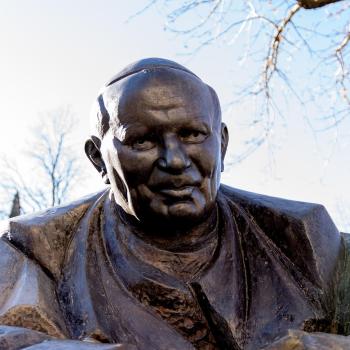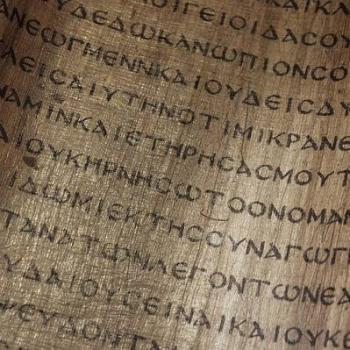THE QUESTION of why Christian clergy often wear black was posed to The Religion Guy during a conversation a while ago. The thought had never occurred, so this is a good example of things we tend to take for granted and don’t hink about. Thus it makes a good “Religion Q & A” topic. (Please feel free to submit your own questions at any time by clicking above at SEND YOUR QUESTIONS IN.)
THE RELIGION GUY’S ANSWER:
Black is becoming the new black. In recent days we’ve seen members of Congress attending the President’s State of the Union address, and preening showbiz celebrities at the Golden Globe awards, wearing that color (or non-color) to proclaim their solidarity with victims of sexual harassment and the burgeoning #MeToo cause.
The House Democratic Women’s Working Group invited women and men of both political parties to participate. One leader, California Congresswman Jackie Speier, said “this is a culture change that is sweeping the country, and Congress is embracing it.”
One year ago this same Working Group urged members to wear white during President Trump’s address to Congress in order to broadcast their support for “reproductive rights” (the favored euphemism for abortion), Planned Parenthood, equal pay, paid maternity leave, and affordable health and child-care coverage from the government.
The black of 2018 carries a suggestion of sorrow, since black is the color traditionally worn by people in mourning or repenting of their past sins (the biblical sackcloth and ashes having long gone out of style).
Then we have the question at hand, that longstanding tradition of Christian clergy wearing black, not to demonstrate alignments but as everyday garb. A 1999 directive from the U.S. Conference of Catholic Bishops states that “a black suit and Roman collar are the usual attire for priests.” Rubrics of the U.S. Episcopal Church say that “a black shirt with a clerical collar usually indicates that the wearer is a member of the clergy,” with white robes customary for celebrating Holy Communion.
Even “low-church” Protestant parsons will convey the pastoral responsibility and authority of their status by accompanying a white shirt with a black or dark suit for worship or when making parish rounds — or the female equivalent. However, megachurch preachers these days may proclaim informality by instead donning technicolor shirts, tail out, and chinos.
Well, what does black represent? In Catholicism’s traditional round of liturgical colors black is specified for funeral Masses. The other colors are white (Trinity Sunday and feasts of Jesus Christ apart from his Passion, but in some countries also for funerals), red (Pentecost, Good Friday, Palm Sunday, feasts of apostles and martyrs), green (the weeks between Epiphany and Lent, and from Trinity Sunday to Advent), and purple (Lent and Advent, but also for funerals in some cases).
The color question is not discussed in reference works in The Guy’s library. One of the few articles about this posted online is by Catholic Father William Saunders, a Virginia pastor and graduate dean at Christendom College. He notes that as early as the 6th Century priests were directed to shun “bright colors” and “richly styled clothing” otherwise.
Saunders writes that black clothing symbolizes the priest’s poverty as well as “mourning and death for the priest,” which means “dying to oneself” in order to serve Christ. He adds, “In our very secular world, the wearing of clerical garb continues to be a visible sign of belief and of the consecration of one’s life to the service of the Lord and his Church.”
The broader history of clergy attire is quite complex. In the early Christian centuries, garb was simple and followed everyday dress in the Roman Empire. Eventually, additions appeared for celebration of the sacrments. By the time of Pope Innocent III in the 13th Century, 17 vestment items were specified in the canons with special colors added to the basic black to signify ranks in the church hierarchy.
The annals of usage in the Catholic Church’s “Latin Rite,” and the “Eastern Rites” that echo Orthodox usage, are replete with fussy terms such as: amice, alb, biretta, cappa magna, chasuble, cincture, cope, cowl, dalmatic, enchirion, epigonation, epimanikla, exokamelaukion and kamelaukion, fanon, humeral veil, maniple, mantle, mitre, mozetta, omophorion, pallium, pluvial, rochet, sakkos, stole, succinctorium, surplice, tiara, and tunicle.












